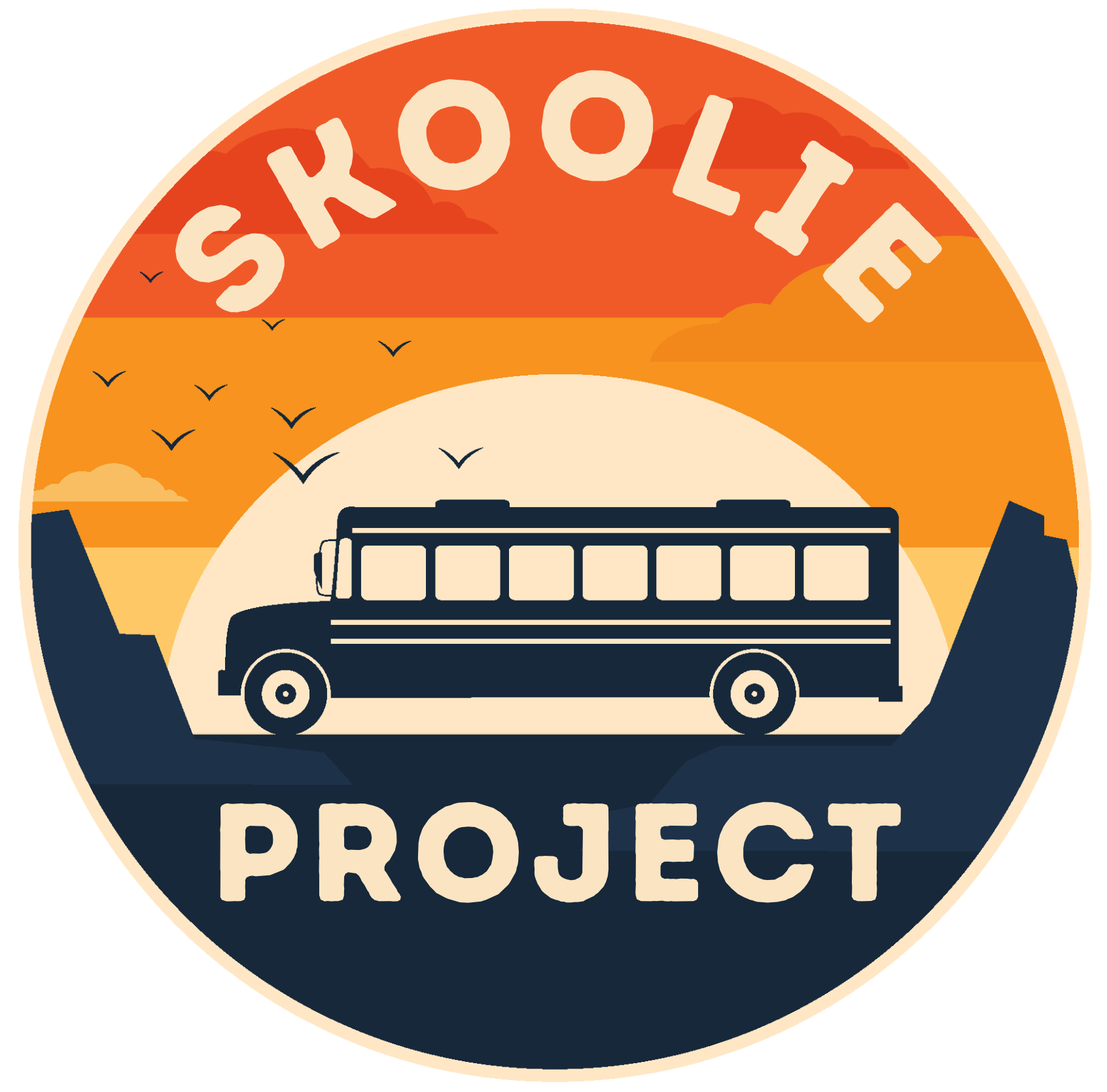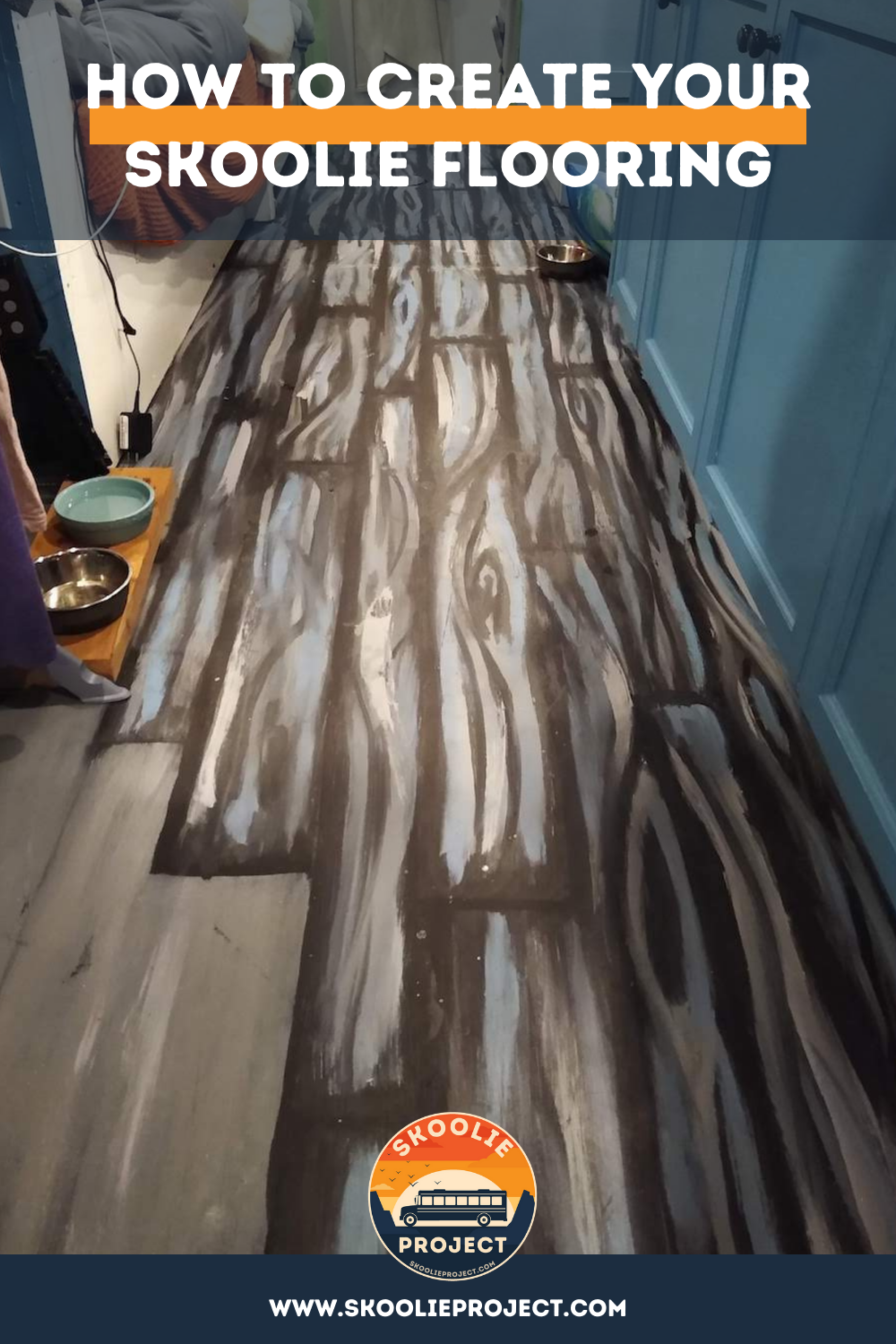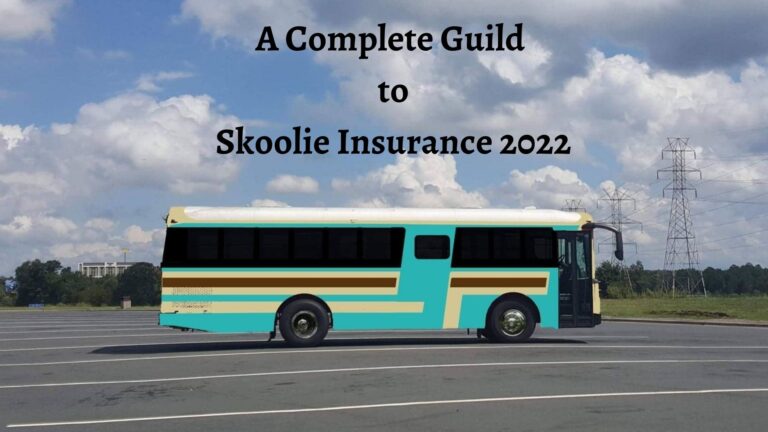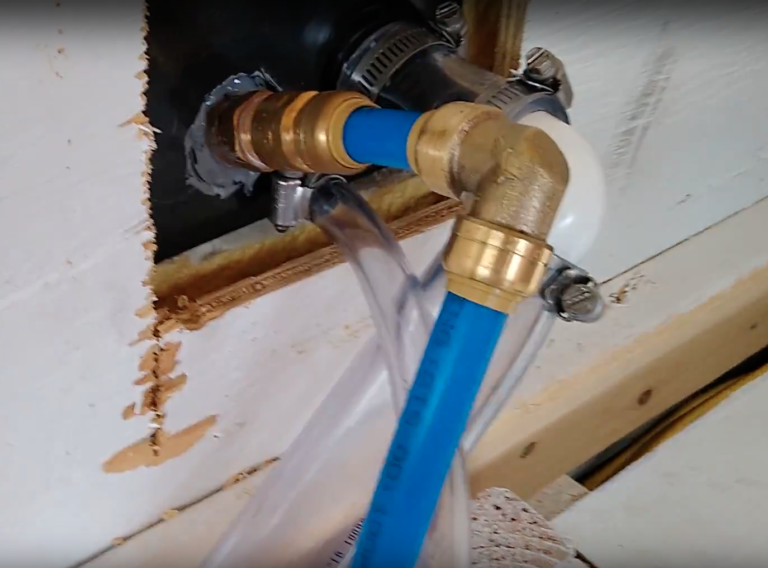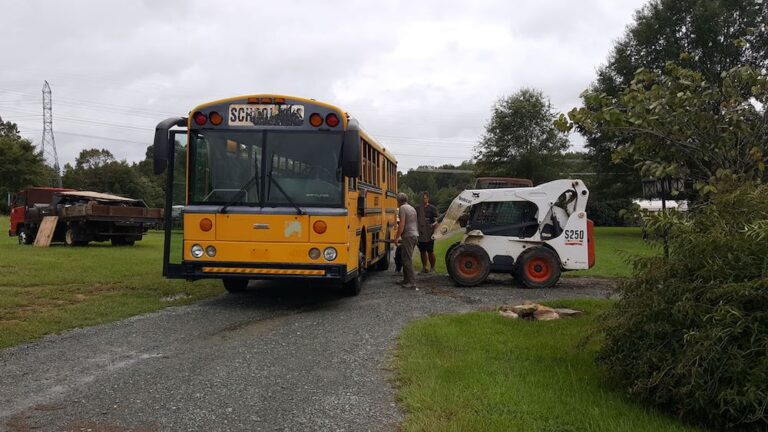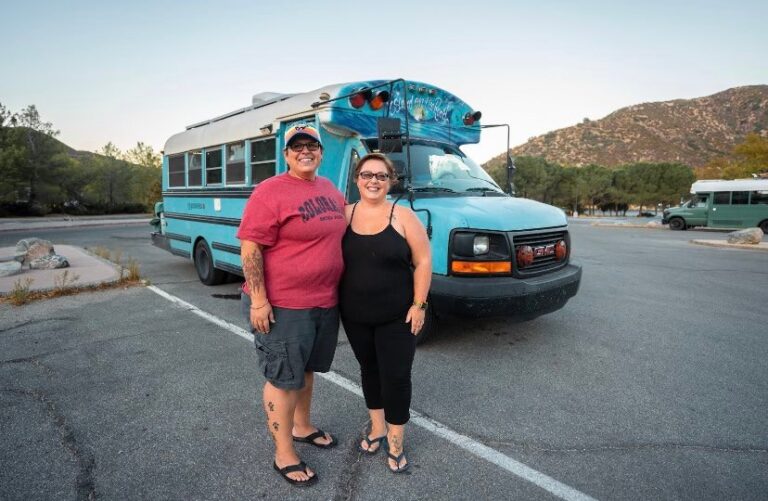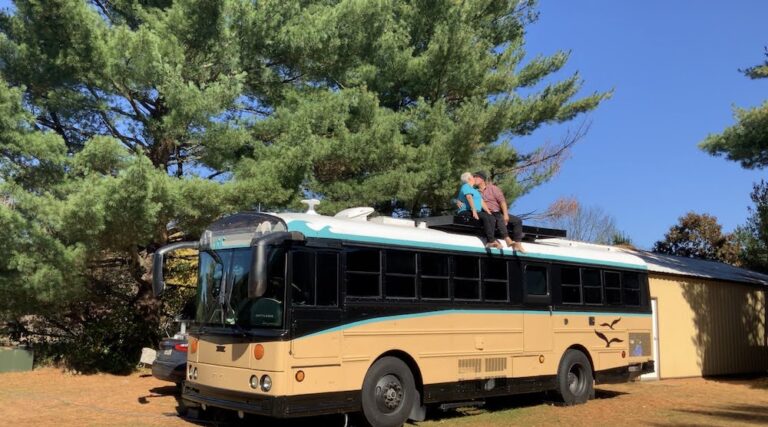How To Create Your Skoolie Flooring
Most of us do not even give our skoolie flooring a second thought after it is done. In fact, we would venture to bet that most of us do not give it much thought before the build, other than what they want it to look like.
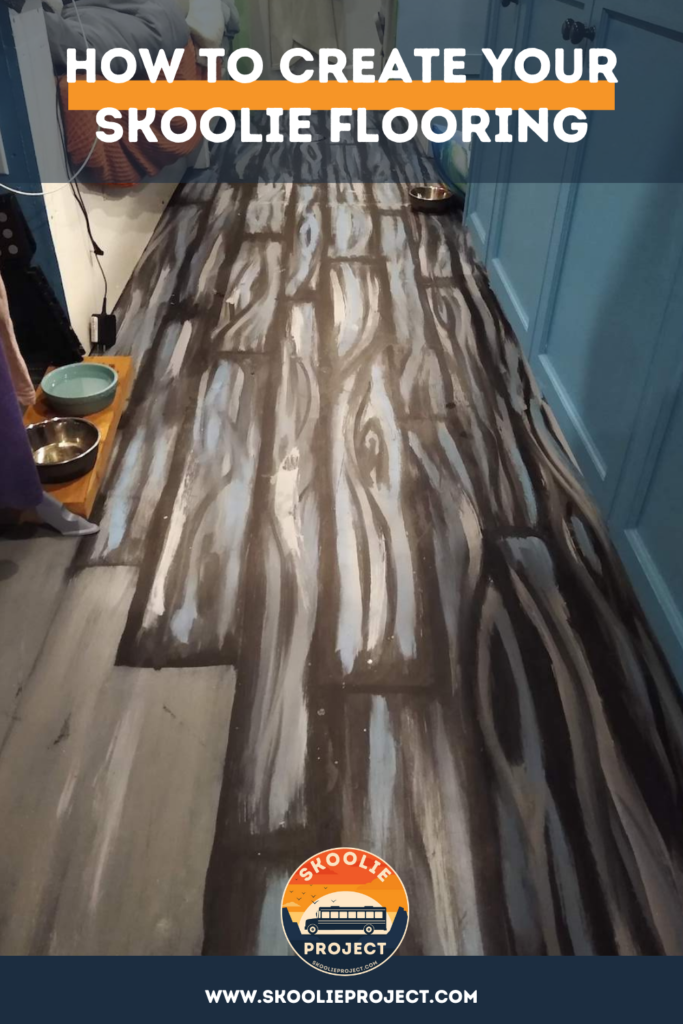
Skoolie flooring is one of the first and most important aspects of a skoolie project. It is the foundation, if you will, of the entire build.
How you decide to frame or not frame your subfloor, insulate and then ultimately cover it, can have an impact on the est of your build.
For many, the floor is an anchor point for attaching walls, furniture, or anything else that rests on top of it.
Your skoolie flooring does not have to follow a formula or meet the standards of anyone's expectations, but your own!
How Do I Remove The Floor From My School Bus?
One of the best feelings in the world for a skoolie owner is when you have removed that last piece of school bus floor plywood.
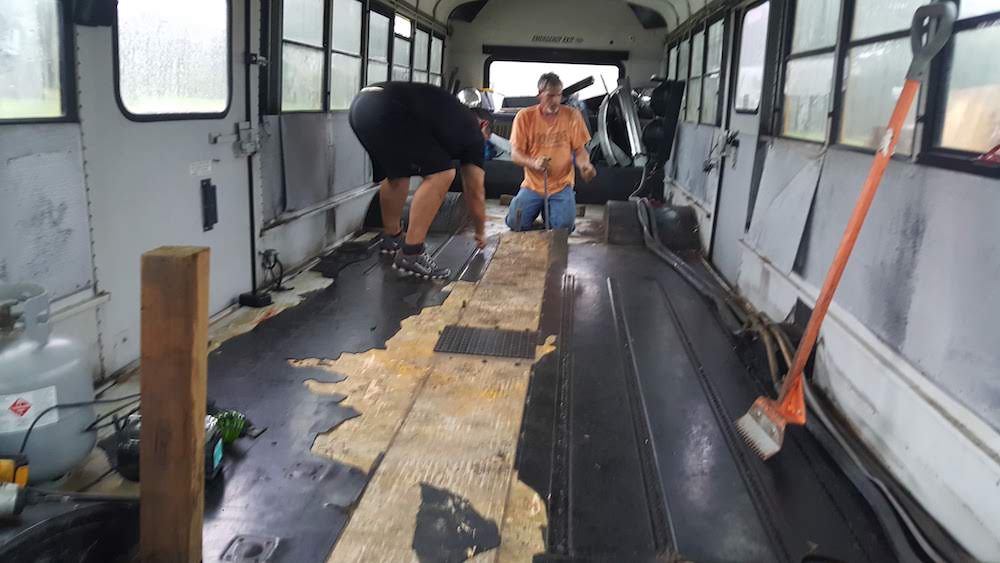
Removing your school bus floor is not for the faint of heart. Depending on the make and model of your bus, the floor is going to be more or less complicated to remove.
Add in the factor of whether your bus is equipped for special needs, which means it will have wheel-chair tracks, it could get much more complicated to remove.
The rusty bolts and screws holding the floor down is a whole other factor that we cringe to just think about based on our personal experience.
The most effective way of removing your school bus floor is with a small sledgehammer, a crowbar like the Floor Demon, and a prybar.
It would not be a bad idea to have a few pieces of 2×4 on hand to help hold the floor up while you have pried it up.
Start at one end of your bus or another and work your way forward.
Using the crowbar, you should be able to “pop” the corner or edge free of the metal flooring. It is typically held down by wood to metal nails.
Once you have been able to lift the edge of the plywood floor up a little bit, then place a 2×4 under it and keep working it until the entire section lifts or “pops” up from the metal floor.
Continue to work your way across the floor until it is all removed.
If there are wheelchair-locking tracks on the floor, you are going to need to have someone under the bus holding the nut with a wrench while someone inside of the bus screws the bolt.
For nuts and bolts that are seized up by rust, try some rust inhibitor. If that still doesn’t work, you may have to drill out the screw or get the grinder out.
Basically, you remove your school bus floor with lots of tenacity, energy, and determination.
Why Should I Remove My School Bus Floor?
We know so many people who go into their build not wanting to remove their school bus floor. They think (they are convinced) that it is clean and perfect underneath that rubber and plywood floor.
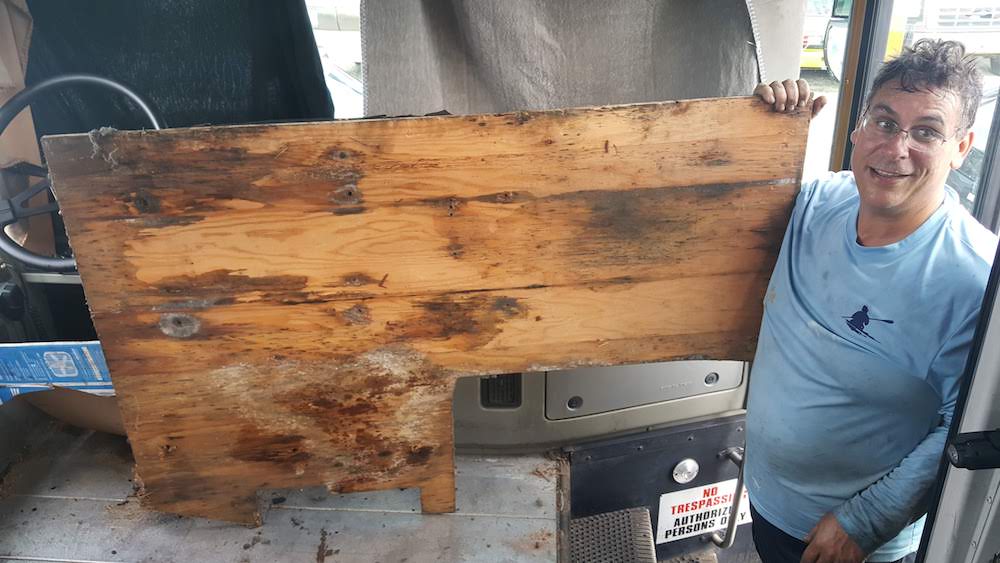
I have never seen the underside of a school bus floor, the metal floor, that does not need some form of rust mitigation. If your bus is only a few years old and it comes from the desert, then it probably is going to be okay.
A good example of this is a bus currently being converted by a friend. The bus looks immaculate. The cleanest-looking bus we have ever seen before conversion.
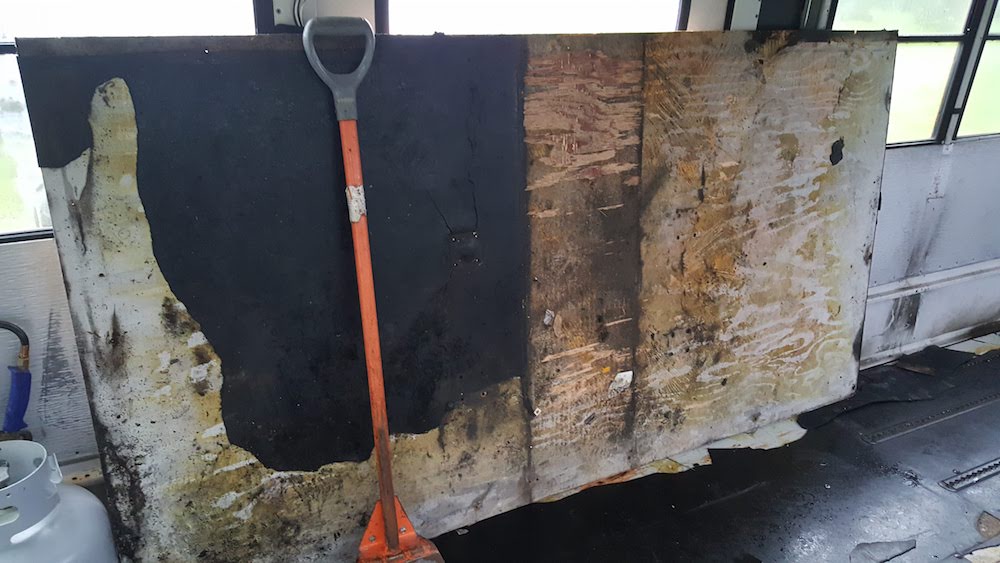
Once the floor was removed, there was rust everywhere. There were a few spots where the rust had “eaten” through and created holes in the metal floor.
The bottom line is this. Remove the wood that was installed by the bus manufacturer. Clean and prep your metal floor.
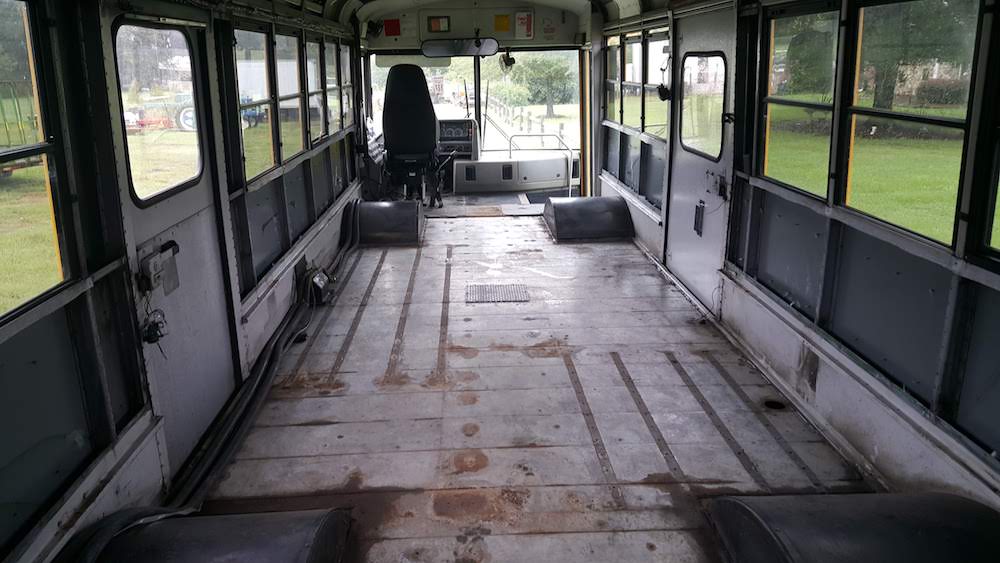
Even if the metal is spotless and rust-free, you can’t insulate your floor unless you remove the old floor first. At least, without sacrificing a couple of inches of headroom.
How Do I Do Flooring In A Skoolie?
There is no steadfast or required way to do a skoolie floor. There are lots of ways to do and some are better than others as far as durability, insulation and aesthetics.
Understanding, however, that aesthetics to one person from another is going to be different.
Generally speaking, skoolie flooring looks like this:
- Metal Skoolie floor
- Insulation
- Plywood
- Finished flooring
This is not always the case. You lay your flooring how you want and feel is best for you and your skoolie life experience.
What Are School Bus Floors Made of?
School bus floors may vary slightly between manufacturers and regions where the school bus will be commissioned for a school district.
Generally speaking though, the school bus floor is going to have three components to it.
The Metal Floor
The metal floor of the bus is a part of the structural build and intention of the bus. It is attached to the frame rails of the bus chassis and intended to provide safety and structural integrity to a bus in the event it is involved in an accident.
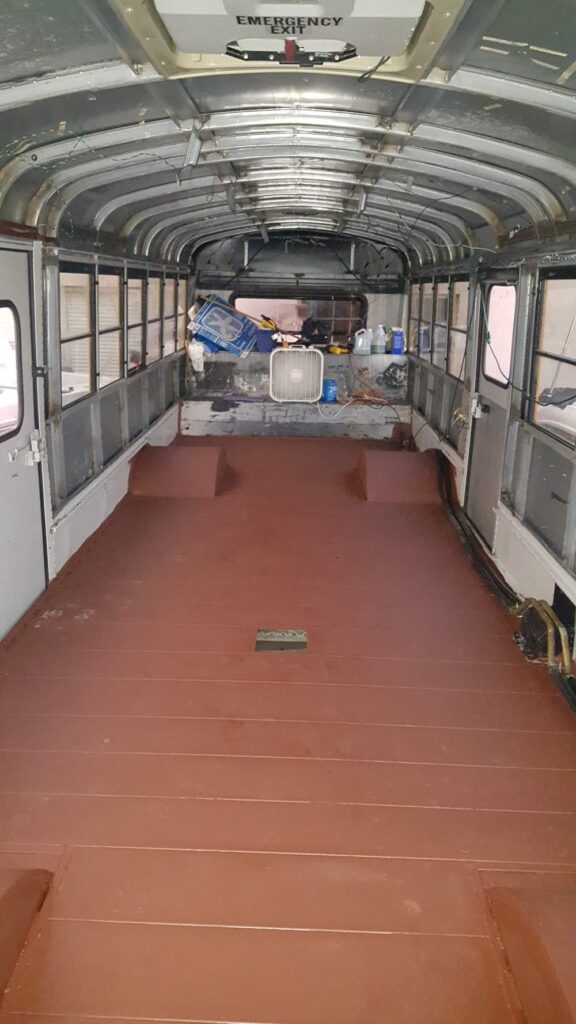
Bus floors, as well as the ceilings, are designed and constructed so as they do not collapse, cripple, or separate. It is intended to remain and retain its barrel-like shape even in the event of a rollover.
Plywood Subflooring
The plywood floor that lays on top of the metal floor is to provide a barrier between the metal floor and the outer floor. It is typically ¾ plywood. We have never witnessed the plywood floor in a bus to be pressure-treated wood.

The plywood floor, almost always pine, is either nailed to the metal floor or sometimes attached by bolts and nuts. The bolt and nut method usually involves wheelchair or equipment tracks installed into the plywood.
Rubber or Vinyl Covering
The final piece to a school bus floor is the rubber mat that is glued to the plywood. The purpose of the rubber covering is to protect the plywood floor and provide a non-slip, durable surface for the students to walk on as they take their seats.
The rubber cover typically does a good job, but as it gets older, it becomes dry and brittle and allows for moisture and wetness from shoes to seep down to the plywood and ultimately the metal floor.
How Much Does A Skoolie Floor Cost?
The cost of your skoolie floor is going to depend on a few things.
How large is your bus?
The more square footage you have in your bus, the more materials it
is going to take to build and cover your floor to the finished product you desire.
The type of flooring you install
The more expensive the materials you use to build and cover your
floor, the more expensive it is going to cost you.
The market cost of lumber at the time of construction.
Lumber costs have more than doubled since we built our first skoolie
back in 2018.
Depending on what part of the country you are in and the current
price of lumber, your bottom line costs are going to fluctuate by as
much as twice as much.
You have the ability to control the costs of completing your skoolie floor to a certain degree.
Remember and understand, despite what your ideas are of building and living in a skoolie is based on what you have witnessed, skoolie builds and life is not as inexpensive and carefree as many think.
When you build it out “right” and travel on a regular basis, be prepared to spend thousands of dollars.
How Much Should I Pay For A Skoolie?
How much you should pay for a skoolie all depends on how much money you are willing to spend on the bus that you want.
If you are just wanting a school bus and have no preference of the year, make, model, condition, or milage, then you can get away with spending as little as a few thousand dollars.
However, as with everything in the last couple of years, inflation is kicking all of our butts. What you spent on a bus a few years ago is not going to be the same price today in 2022.
We paid $4,500 for our bus in 2018. Our current bus cost us $6,500. Same make and engine, different model.
The point is, you are going to spend as much as you think your bus is worth to you.
You can read a post we completed on Choosing A Skoolie. Let us know what you think.
Is It Illegal To Live In A Skoolie?
This question comes up so often, we felt it warranted addressing again. Is it illegal to live in a skoolie? No, it is not, for the most part.
If your skoolie is registered as a motorhome and you are not overnight camping in a location that prohibits it. Read this post we wrote on Is It Legal To Live In A Skoolie In 2022?
Give it a read and if you have any questions or comments about it, please leave your thoughts.
More and more people are leaving the societal norm of living in a mortgaged house or paying rent in an apartment or house. Working a 9 to 5 job that requires their loyalty and obedience daily.
We love this nomadic community and what it is doing for the lives of people who are strong and brave enough to make it happen!
How Do You Install A Floor In A Skoolie?
Installing a skoolie floor is much easier than ripping a school bus floor out. At least that has been our experience.
Once the floor has been cleaned and prepped, then it is time to rock n roll on your floor.
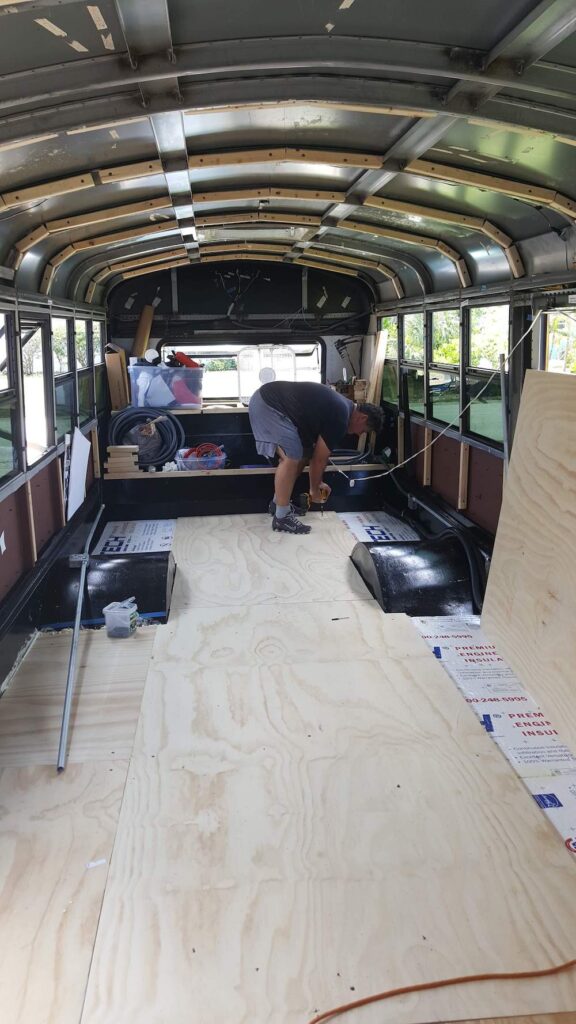
We are going to talk about how we installed our skoolie floor in our first bus, and how we are installing our floor in our current skoolie project.
Both are basically the same, we are using a different top or finished floor in our current project than we did in our first.
It all starts with insulation for us. We use one-inch foam board insulation. It has a good R-value for insulation. Anything thicker than one inch takes away from your headroom.
We do not like the feeling of the walls or ceiling closing in on us, so we want to preserve and take advantage of all 78 inches of headroom we have.
After the ceiling, we prefer to go with ¾ inch pine plywood. We prefer pine for this application because of the better quality plywood sheets available, it is typically the least expensive.
On top of the pine plywood, we choose to go with Home Depot’s brand of vinyl tongue and groove waterproof flooring on our current build.
It looks good, holds up to traffic and puppy feet. Vinyl wood flooring looks good and is easy to install. It’s fairly inexpensive as well.
For our first skoolie floor, we simply painted a design on the pine plywood floor and then put a few coats of polyurethane on it. It looked like a professionally installed floor. We loved the look, durability, ease of clean and inexpensive costs.
However, you decide to install flooring in your skoolie is up to you. You are only restricted by your imagination and budget. So have fun and be creative!
What Should I Use For My Skoolie Floor?
As we have stated more than once, your skoolie project is only restricted by your imagination and your budget. How you build out any portion of your conversion is a representation of who you are at the time of the build.
There are a few popular materials used in skoolie floors. It is not restricted due to imagination as much as it is just the available materials to make a floor.
It is no different really than the options available for sticks and bricks home.
Skoolies typically do not have stone or tile floors due to the weight of those materials as well as the inability to keep them from cracking or breaking due to the bouncing and bumpiness of skoolie traveling.
Plywood Floor
Plywood floors are easy, economical, and if properly sanded and treated, make for a very durable and lasting skoolie floor. You can paint or stain it any color you like.
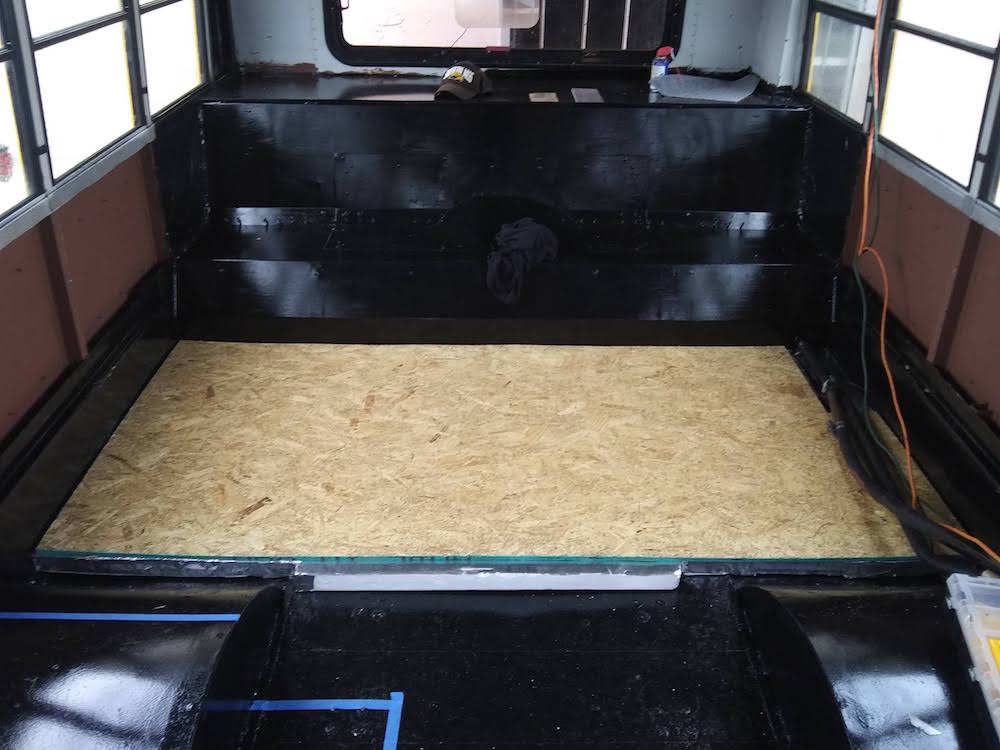
If you choose, it can become a canvas for a piece of art right on your floor. This is what we did in our first skoolie.
Nat played out some of her artistic talents on our floor and we were instantly in love with the look and mood she created.
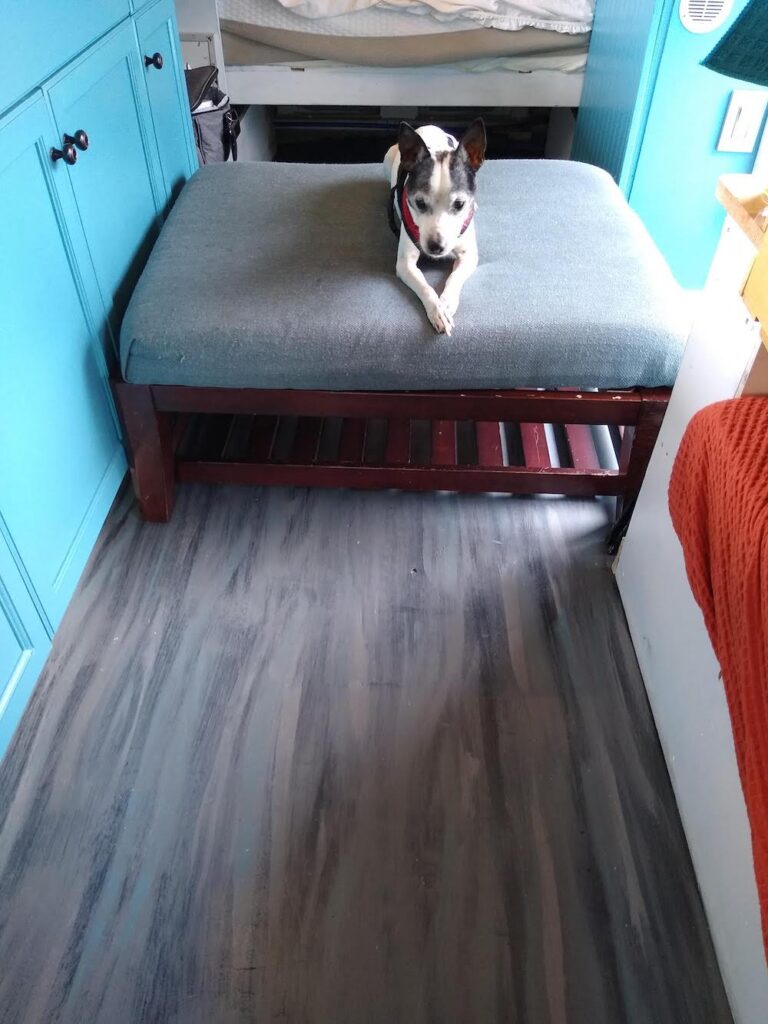
Wood Floor
Wood flooring in a skoolie looks amazing. The real and natural texture and energy of wood floors make a skoolie a home almost instantly.
Wood flooring in a skoolie is no more difficult to install than tongue and groove or vinyl flooring, but it is going to be more expensive.
You may get a good deal on some repurposed wood flooring from a Habitat for Humanity Re-Store or somewhere similar.
Vinyl Floor
Vinyl flooring is one of the least expensive materials to install as your finished floor.
However, as simple and inexpensive as it may seem, it can be one of the most challenging and frustrating types of floor to install.
Because it comes in a rolled sheet or long sections, it will “bubble” or bunch up in the middle. To prevent this, you will want to use some type of adhesive to glue it to the plywood sub-floor.
The only problem with glaring to the plywood subfloor is if you ever decide to change it out for a different type of flooring, the glue is going to give you fits.
Waterproof Vynal Tongue & Groove
Our “got-to” finished flooring now is the LifeProof or Home Depot’s brand of Life Proof vinyl, wood, tongue, and groove, waterproof floor tiles.
The vinyl tiles look and feel just like real wood floors. Bonus points for being waterproof. That is especially great with you have a pet or two like us with two dogs.
Water bowls and sloppy drinkers are no problem with the waterproof
vinyl wood planks. We love it and have enjoyed our Sprinter
conversion so much we are using the same stuff for our skoolie floor.
Skoolie Floor Insulation
How you decided to insulate your skoolie floor is up to you, your budget, and the amount of warmth you feel you need. No one insulates their floor because they want to keep the floor cool.
Skoolie flooring insulation is all about keeping your feet warm in colder climates.
We have friends who have chosen to use havelock wool for their skoolie floor insulation. Stiff foam board, over a longer time, holds up much better for your floor. Its insulation R-value is just as good or better and it is simple and inexpensive to install.
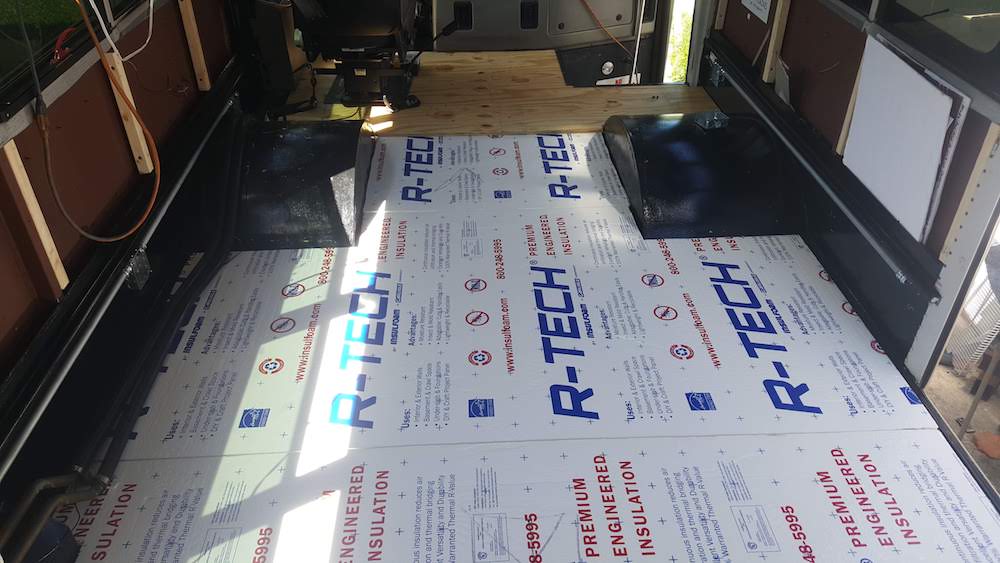
Have ever woken up and walked barefoot over a cold floor? We’ll bet that you do not want to do it on a daily every day.
One of our good skoolie friends has a hydro-thermal insulated floor. That is a fancy description that means he has warm water, through Pex plumbing underneath his floors. The hot water conducts to his floor to keep it warm and toasty.
Just plan accordingly of where you think you are going to be traveling and camping. If it gets below freezing, ever, insulate your floor so you stay comfortable just like you would in sticks and bricks home.
Wrap Up To Skoolie Flooring
Skoolie flooring does not have to be boring or an afterthought. Just like every other aspect of your skoolie build, your skoolie floor should exhibit and express your energy, personality, and creativity.
If all of that means that your floor is just a plywood floor, vinyl flooring, or a beautiful teak wood tongue and groove, then so be it.
It isn’t about how much money you spent on it or how different and unique it is from anyone else's floor. It is about laying down a floor you are happy and satisfied with every day you look and walk on it.
We want to see what you have done with your skoolie floor! If you are still planning it, we want to hear what you are planning.
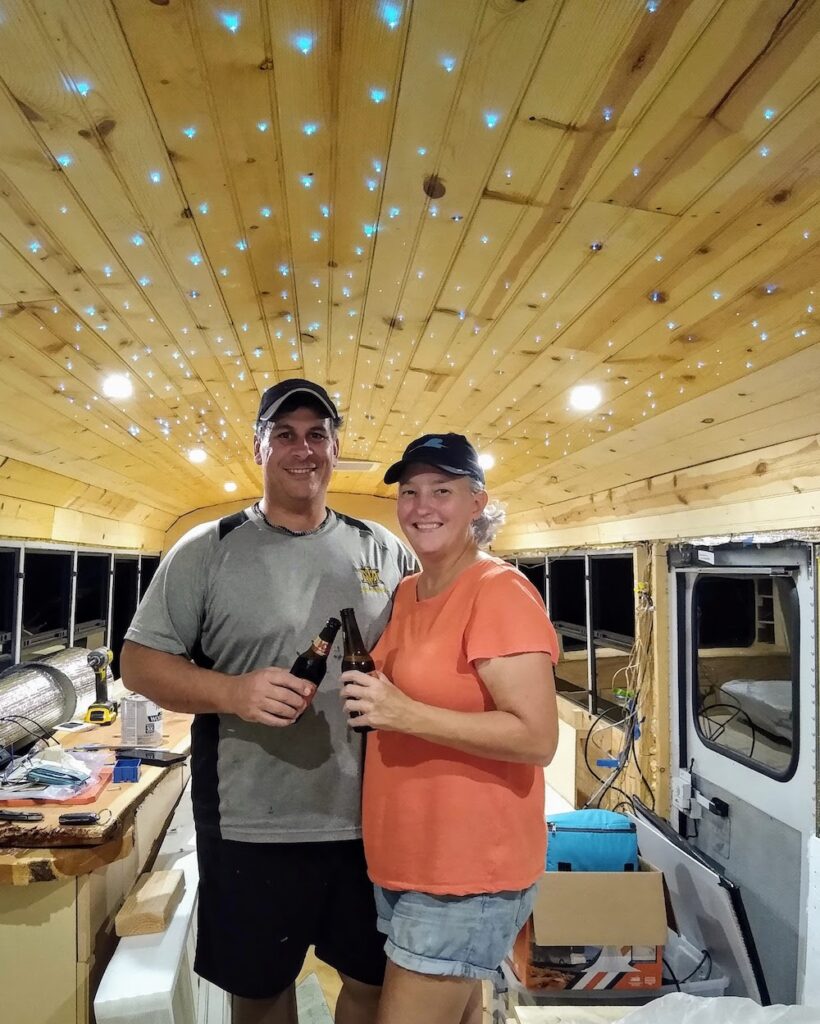
Leave us a comment so we can connect! We look forward to meeting you!
